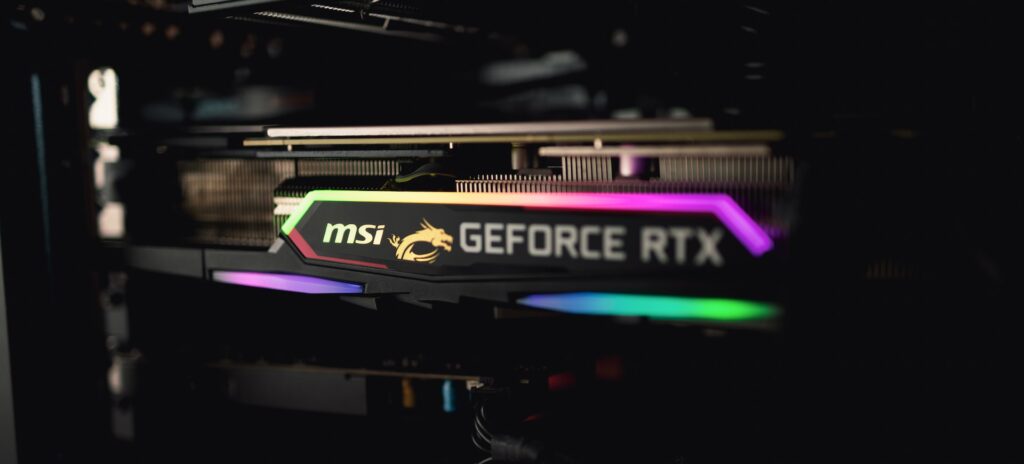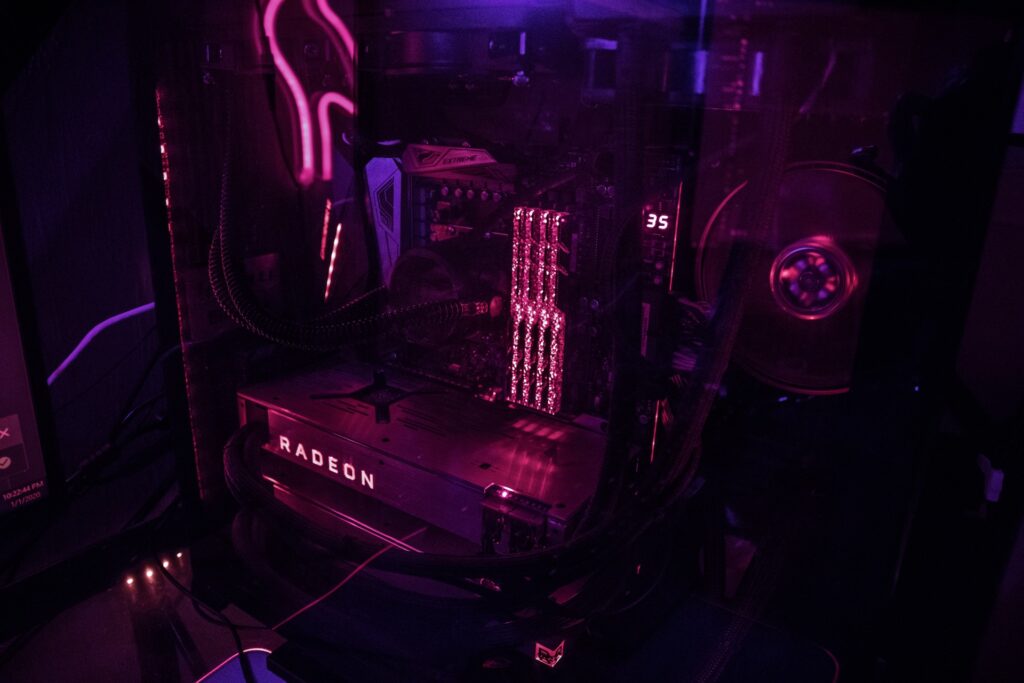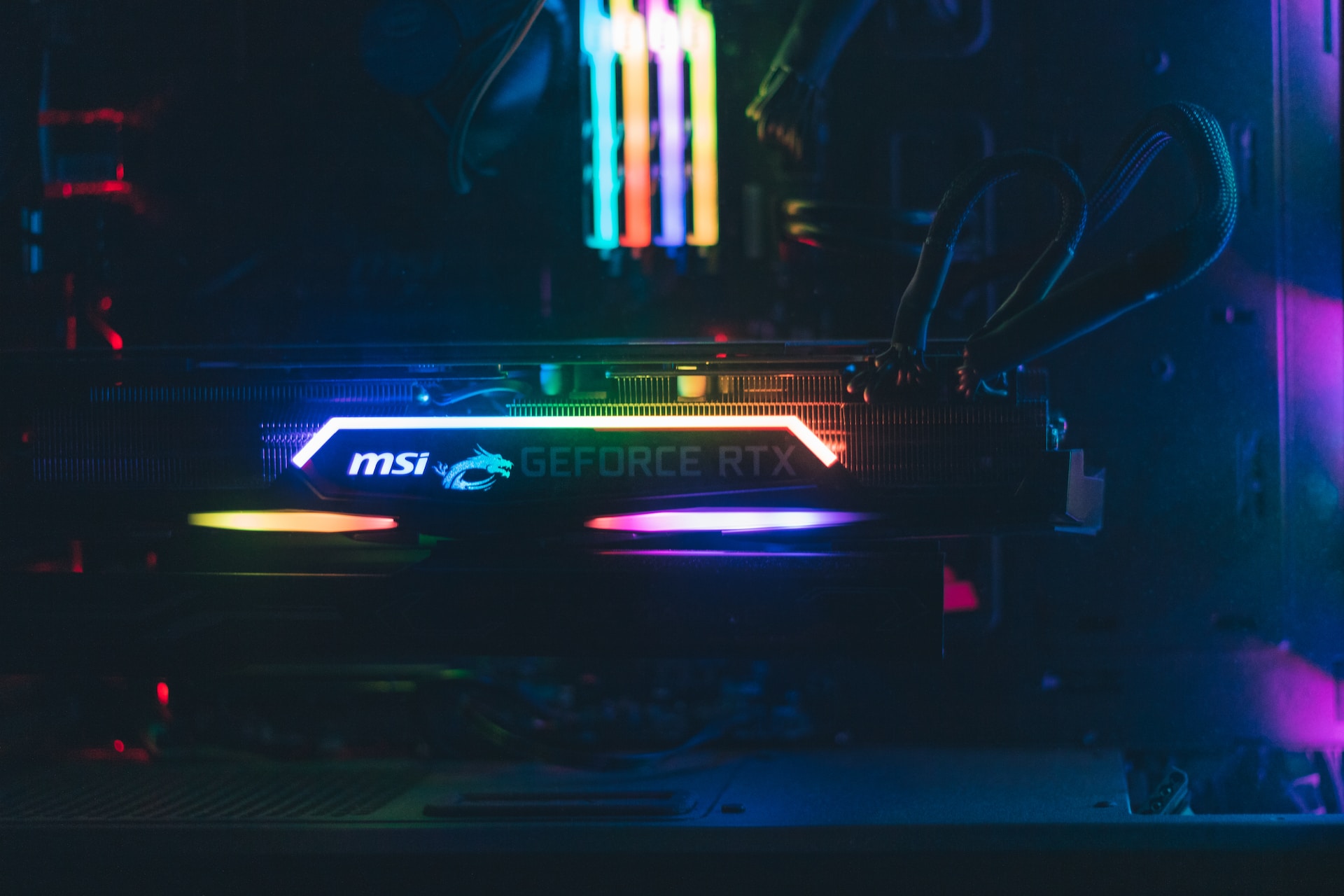Are you about to upgrade your desktop or laptop and don’t know which GPU to opt for? When it comes to NVIDIA vs. AMD, the choice is always hard. The good news is that both manufacturers focus on gaming performance. So, in theory, both an NVIDIA and an AMD graphics card will cover your gaming needs.
But performance isn’t everything when comparing two GPUs. It is, of course, one of the most important aspects. This guide will comprehensively review the two graphics card manufacturers in 2023. To do that, we will compare their products in terms of performance, technologies, software, availability, power efficiency, and value for money.
Our aim is to help you answer the critical question: which GPU is better for me as a gamer – NVIDIA or AMD?
NVIDIA vs. AMD: Comparison by Category
When it comes to choosing between NVIDIA and AMD, it’s important to remember that both manufacturers are top-notch, and our choice for 2023 may change in the near future. With that in mind, in this section, we’ll take a closer look at our comparisons by category.
This will include performance, technologies, software, availability, power efficiency, and value for money:
Gaming Performance: Benchmarks
When it comes to gaming, performance is king. Both NVIDIA and AMD have been pushing the boundaries of what’s possible in gaming. In terms of raw performance, NVIDIA’s latest flagship GPU, the GeForce RTX 4090, currently sits at the top of the leaderboard, offering the best performance in most games.

On the flip side, Radeon RX 7900 XTX, the AMD flagship, is also an enormously powerful GPU. Overall, both NVIDIA and AMD offer excellent gaming performance.
While NVIDIA currently holds the crown in most games, AMD’s offerings are not far behind and may offer better value for those on a budget. When talking about raw GPU performance, NVIDIA is the winner in most categories based on benchmarks.
Winner: NVIDIA
Technologies Used in 2023: Ray Tracing, DLSS, and FidelityFX
Both NVIDIA and AMD have made steps in developing cutting-edge technologies for their GPUs in 2023. We can safely say that the NVIDIA RTX series is considered the best when it comes to ray tracing. Ray Tracing is a technique used to enhance the realism of graphics by simulating the behavior of light in real time.

On the other hand, AMD’s FidelityFX suite provides unique features that cater to the needs of gamers. The suite includes features such as Contrast Adaptive Sharpening, which enhances image details, and Variable Shading, which optimizes performance by adjusting the shading rate based on scene complexity.
NVIDIA’s answer to FidelityFX comes with DLSS or Deep Learning Super Sampling. This innovative technology uses machine learning to upscale lower-resolution graphics to higher resolutions.
We found it particularly difficult to declare a clear winner in this category since NVIDIA and AMD offer impressive technologies catering to different needs. The choice in this category comes down to your personal needs and preferences.
Winner: It’s a tie!
GPU Software: Drivers, Overclocking, and Monitoring
When it comes to GPU software, both NVIDIA, and AMD, offer a suite of drivers, overclocking tools, and monitoring software to optimize your gaming experience.
NVIDIA’s GeForce Experience software offers a user-friendly interface that allows for automatic driver updates, game optimization, and live performance monitoring. It also provides tools for recording and streaming.
EVGA Precision X1 software is currently the most popular overclocking tool for fine-tuning an NVIDIA GPU. You can easily download it and use it in most modern gaming laptops with NVIDIA graphics, including new gaming laptops like Razer Blade 16.
AMD’s Adrenalin software is equally powerful and fully customizable. Radeon Software Adrenalin is more user-friendly, offering an interface that includes driver updates, game optimization, recording/streaming, and performance monitoring. OverDrive tool is a popular overclocking tool that allows for fine-tuning of GPU performance.
Overall, while both NVIDIA and AMD offer excellent GPU software, AMD narrowly wins this round.
Winner: AMD
NVIDIA vs. AMD: Availability
Both NVIDIA and AMD faced supply chain and production challenges in 2021 and 2022. Yet, in 2023, companies are expected to increase their production capacity to meet the demand. The same is true for previous GPU models you may want to opt for.
Both manufacturers have continued to produce their previous series. Of course, availability varies depending on the model and your region.
As of now, new AMD GPUs are relatively easier to find compared to NVIDIA. So AMD could be considered the winner in this category. However, keep in mind that this may change in the near future.
Winner: AMD
Power Efficiency: TPD, Cooling, and Power Consumption
The power efficiency of a GPU is important not only for environmental reasons but also for practical ones. A GPU that draws more power will require more robust cooling solutions, which can lead to increased noise and heat output. In addition, higher power consumption can result in higher electricity bills over time.

Ultimately, when it comes to power efficiency, it’s a close race between NVIDIA and AMD. Both brands have made impressive improvements in recent years, and the choice between the two will likely come down to individual models and their specific power requirements. If we had to choose one, that would be NVIDIA.
Winner: NVIDIA
Nvidia vs. AMD: Prices and Value for Money
When it comes to prices and value for money, both NVIDIA and AMD offer a range of GPUs at different price points to suit all budgets.
However, as of 2023, AMD tends to offer more affordable options compared to NVIDIA, particularly in the low-end market. While NVIDIA’s mid-tier and high-end cards do provide superior performance, the price point may be difficult for some gamers to justify.
No matter which GPU you opt for, there are ways to save money, such as trading in your previous PC, reselling it, or buying a used gaming device. For example, you can trade your Razer gaming laptop online and save money to buy a newer model.
However, we should note that if you are planning on reselling your gaming computer down the line, NVIDIA-based ones have better resale value than AMD-based PCs and notebooks.
Winner: AMD
Pros and Cons: Strengths and Weaknesses of Each GPU Manufacturer
| Manufacturer | Advantages | Disadvantages |
| NVIDIA | – Better performance – More power-efficient – Variety of mid-tier and high-end GPUs | – Typically more expensive – Limited options in the low-end market |
| AMD | – Generally better value for money – Latest GPUs are easier to find – Excellent software and driver support | – Limited performance in ray tracing and DLSS – Generally less efficient than NVIDIA in power consumption |
Our Verdict
Both NVIDIA and AMD offer excellent options for gamers, and it’s up to you to decide which one is best for you. In 2023, NVIDIA GPUs will be slightly more powerful, more effective in terms of power consumption, and integrate innovative technologies. On the other hand, AMD graphics cards are usually more affordable and offer better value for the money you spend on an upgrade.
Since both manufacturers are equally reliable, it ultimately comes down to choosing a GPU that fits your needs. And if you are looking to upgrade your system, do not forget that you can save by selling your used device or buying a used gaming PC.










